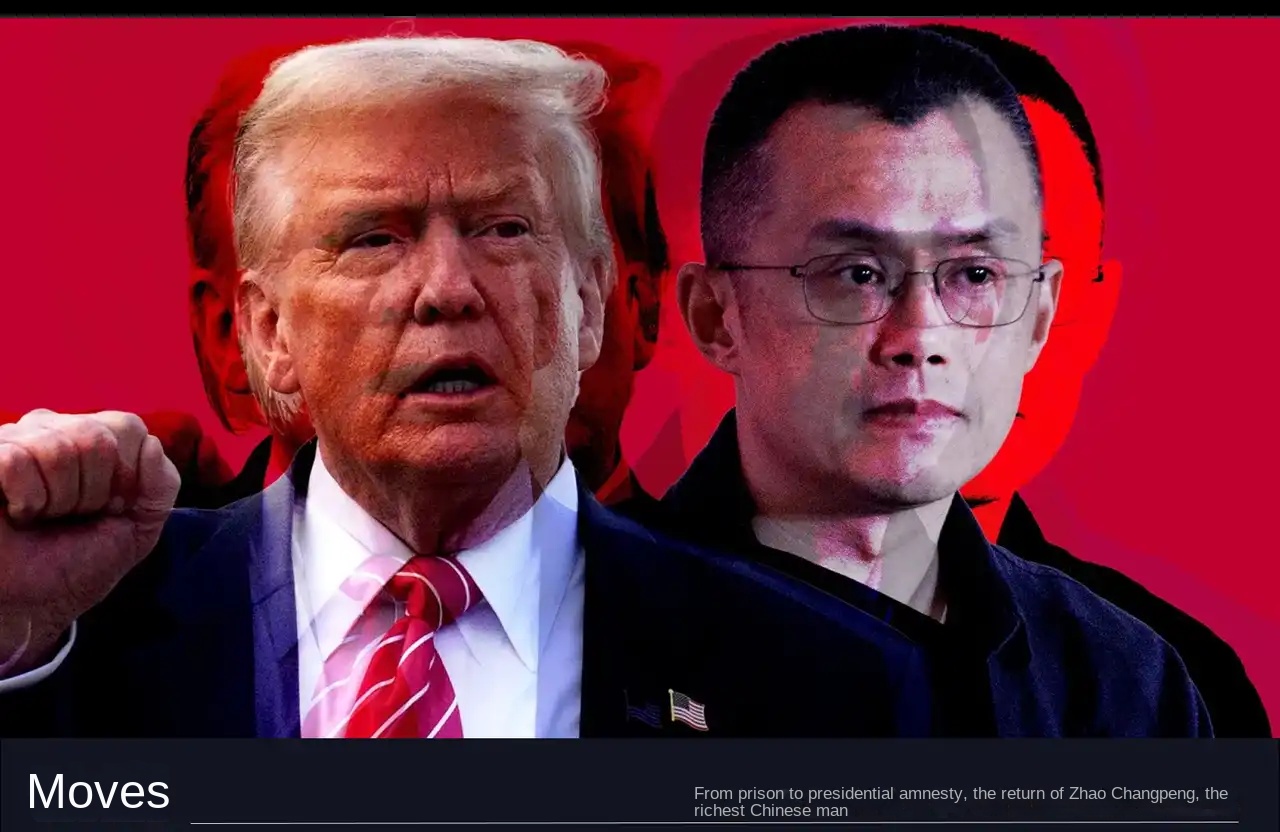What impact does Web4 proposed by the European Union have on the cryptocurrency world?
Original Title: "What Impact Will EU's Proposal of Web4 Have on the Cryptocurrency World?"
Source: veDAO
On July 11th local time, the European Commission (EC) approved a new strategy on Web4 and virtual worlds, aimed at guiding the next technological transformation and ensuring an open, secure, trustworthy, fair, and inclusive digital environment for EU citizens, businesses, and public administration.
The concept of Web3 has not yet been fully understood by the world, and the European policy field has introduced a new narrative for Web4. Is it the traditional world taking a step ahead to open up the next mainstream narrative for the crypto world, or is it Europe, with a low level of understanding of crypto, attempting to take a shortcut? In this article, the veDAO Research Institute will interpret the Web4 proposed by the European Union.
Initiative and Web4
What is Web4?

The manifesto released on July 11th stated that Web4 echoes and covers Web3 terminology, and will become part of a new Internet vision that integrates virtual experiences, the Internet of Things, and blockchain. The European Commission has outlined the strategies and measures it will take to enable greater EU participation in the Web4 technology world.
The definition of Web3 in the European Union's initiative is: "The main features of the third generation of the Internet, Web3, are openness, decentralization, and complete user sovereignty." Based on the recognition of the current concept of Web3 by the European Union, integration between digital and real objects and environments will be allowed, and interaction between humans and machines will be enhanced, called Web4. In short, we can understand Web4 as the evolution of the Web3 concept, in which the Internet of Things, blockchain, virtual reality, and augmented reality are integrated.
The European Union emphasizes that the Web 4.0 and Virtual World Initiative mainly consists of four pillars. The first three pillars are consistent with the goals of the 2030 Digital Europe project: talent skills, business environment, and public services. The fourth pillar includes goals for infrastructure construction such as computing power and cloud, as well as the openness and global governance of Web 4.0 and Virtual World.
Although the European Commission also lists blockchain as one of the constituent technologies of Web4, the wording of the initiative is "trusted" blockchain, rather than the trustless blockchain supported by the native encryption world. At the same time, the European Commission has not yet provided any details, such as how to combine all the technologies together and promote the specific plan of Web4.
Plan related to Web4
In this announcement of the Web4 strategy, many new initiatives were also disclosed: First, the announcement proposed an inherent plan of Horizon Europe, called "Virtual World Partnership", which is expected to be launched in 2025. The goal of this plan is to develop a "roadmap for the industry and technology of virtual worlds" by helping developers, creators, and companies that widely use the Internet to understand this new trend. It also requires testing new solutions with all EU member states. Secondly, a project called "CitiVerse" was envisioned, described as a virtual universe of cities, used to manage and plan the work and activities of cities in an alternative way, but without specifying its target audience. Finally, another idea proposed by the committee involves the "European Virtual Human Twins" virtual replicas of the human body, which can help doctors study disease outbreaks and treatments.
Regarding the introduction of new Web4 technology, Thierry Breton, the EU Internal Market Commissioner, said: "Today, Europe officially becomes the world leader in Web4 and virtual worlds. Europe has the conditions necessary to lead the next technological transformation: innovative startups, rich creative content and industrial applications, a strong role as a global standard setter, and a favorable legal framework for innovation and predictability."
Web4 faces issues within the European Union
In the "EU Economic Outlook after 2030" released in March, the European Union emphasized that digitization is one of its key driving forces, and Web4 is a major technological transformation that will bring a seamless, intelligent, and immersive world. In April, the European Commission obtained approval for MiCA (Market in Crypto-Assets), which opened the door to cryptocurrencies and blockchain, and now hopes to compete with US technological innovation.
Through messages including this Web4 narrative, it is not difficult to see that Europe's regulatory framework is about to become one of the most relaxed regulatory frameworks in the field of cryptocurrency, and is willing to let the European continent stand out in the context of new technologies. However, it seems too early to talk about Web4 for the entire European Union now.
Consensys, the parent company of MetaMask, conducted a survey in June, which showed that only 8% of people in the European Union are familiar with the concept of Web3. On the other hand, terms such as blockchain, cryptocurrency, and DeFi are still unfamiliar to inexperienced individuals and have yet to be understood by most people. For many people who are not familiar with the basics of virtual currency, there are still significant barriers to understanding Web3 or Web4. Many European centers such as Berlin, London, and Lisbon are becoming centers for crypto and blockchain, but other regions on the continent do not even know the meaning of the word "crypto".
Which sectors in the encryption market are expected to benefit?

After gaining an overall understanding of the grand strategy proposed by the European Union, Web4, let's focus on which aspects of it will benefit the encryption market. The EU's announcement regarding Web4 mentions that blockchain technology can be used to manage assets in the virtual world, such as virtual currency or virtual real estate, and allows for secure and transparent transactions within the virtual world. There are also many sections that mention "virtual world" and "digital cities," which are one of the main future directions in the announcement. Therefore, this may be good news for the metaverse-related track.
In the EU's initiative, "Blockchain" was mentioned 30 times, "Crypto" and related words were mentioned 7 times, and "NFT" was mentioned 40 times. Overall, NFT is also a key area mentioned in this EU initiative. The article points out that NFT is being widely used in various applications. It acknowledges that "NFT promotes innovation in content creation and provides opportunities for artists (and creators). NFT platforms directly connect artists (and creators) with potential buyers and connect them at a lower cost," which is a widely accepted consensus.
In addition, the initiative also proposes a combination of NFT and traditional commerce: "In fact, NFT has already been introduced into new business models. NFT can also be used in specific use cases such as sales and event ticketing in sports, fashion, gaming, music, etc." Currently, the application of NFT and traditional commerce is not yet perfect, and this signal from the European Union may promote the development of this track.
Finally, in terms of security and privacy protection, cross-border payments, and international trade, the importance of blockchain to Web 4.0 has also been mentioned, but not discussed in detail. This may bring potential growth points for the hot zk technology in the encryption market and the yet-to-be-hot payment applications.
Conclusion: The EU has introduced the concept of Web4, seemingly to accelerate in the blockchain field and surpass Asia and the Americas, which are constantly expanding in the infrastructure field. Therefore, the EU plans to create and become a standard setter locally. However, the popularity of Web3 in Europe is still insufficient, and it remains to be seen how the concept-driven Web4 will develop. Although the relationship between Web4 and Web3 is not closely related, the construction of Web4 in the EU may bring a wave of enthusiasm to the encryption track during the EU's active promotion period.
Original text of the EU initiative:
https://ec.europa.eu/transparency/documents-register/detail?ref=SWD(2023)250&lang=enOriginal Link
Welcome to join the official BlockBeats community:
Telegram Subscription Group: https://t.me/theblockbeats
Telegram Discussion Group: https://t.me/BlockBeats_App
Official Twitter Account: https://twitter.com/BlockBeatsAsia


 Forum
Forum Finance
Finance
 Specials
Specials
 On-chain Eco
On-chain Eco
 Entry
Entry
 Podcasts
Podcasts
 Activities
Activities
 OPRR
OPRR









